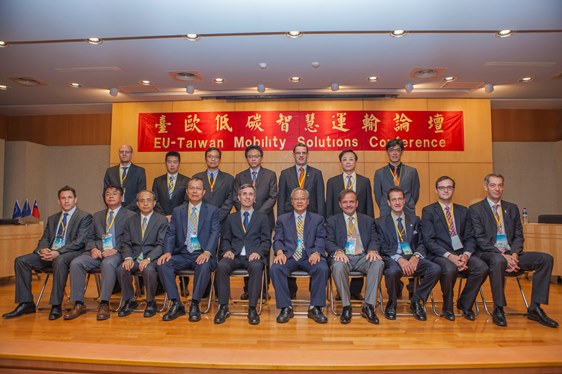EU-Taiwan Mobility Solutions Conference Report





The Chinese TV System (CTS華視) also reported on the conference: 低碳運輸論壇 打造台灣成低碳島 http://youtu.be/cxQqvz79Ccs
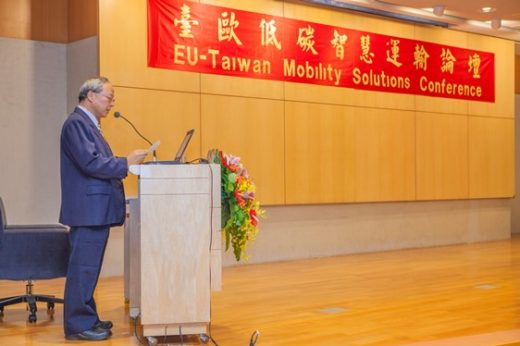
In his opening remarks, Administrative Deputy Minister Fan said that the MoTC attaches great importance to the issue of climate change, reducing CO2 emissions and green transportation. The government has taken action on a number of fronts. It has set up a body to supervise national energy conservation and a green transport action force in charge of rolling out a green transport network. The government continues to improve the reach, efficiency and quality of the public transportation network and encourage the public to use public transport whenever possible. The government is also moving ahead with plans to transition to greener transport options, such as electric buses which will reduce noise, pollution and therefore emissions. Dr Fan concluded by saying that he appreciates the expertise and support from LCI member companies to help to realize a smarter, safer and greener transport network in Taiwan.
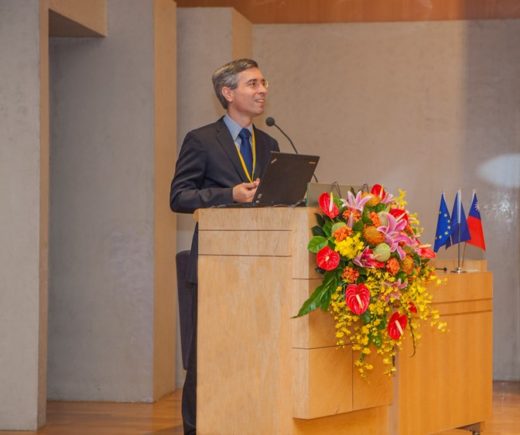
In his remarks EETO Head Frédéric Laplanche said that we have a moral obligation to take action on climate change but it is also an economic obligation, which is necessary to maintain competitiveness. From 1990 until now the EU has cut greenhouse gas (GHG) emissions by 19% while achieving GDP growth of 45%. This shows that sustainable, low carbon economic growth is possible. A number of EU-wide initiatives have helped to achieve this impressive result. Much progress has been made in buildings. Modern or retrofitted buildings now use half of the energy they consumed in the 1980s while industry uses 19% less energy than in the 1990s. In the, EU 25% of GHG emissions are from the transport sector, the second largest after energy. Emissions of the transportation sector increased from 1990 to 2010. Despite the great improvements in the energy efficiency of vehicles, technological advances have not been enough to offset the large increase in the number of vehicles and their usage. Therefore, the automotive sector is now an important target for further improvements. The EU has set a target for car manufacturers to reduce vehicle emissions to an average of 95 grams of CO2 per car per kilometre. We also need to change our ways of life by planning cities better. This does not mean we have to lead less comfortable lives. For example, the use of bicycles for last mile transportation has almost doubled in cities like Paris and people are happily embracing this trend as a healthy and green transportation option. There are a lot of examples from European business showing that Europeans are at the forefront of sustainable transportation solutions. The EU is also providing a lot of money for research. About €1 billion is being spent every year on smart green and integrated technology through various projects. Taiwanese firms are welcome to join these projects together with European partners. Laplanche concluded that he hoped that the conference would result in new kinds of cooperation.
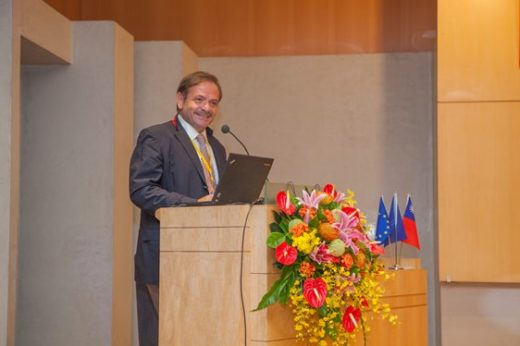
In his opening remarks ECCT Chairman Giuseppe Izzo noted that the World Meteorological Organisation has recently reported that concentrations of carbon dioxide in the atmosphere reached record levels in 2013. Given that the transportation sector is one of the major sources of carbon emissions globally, reducing emissions generated by the entire global transportation network and supply chain is one of the key components of a global effort to cut carbon emissions and thereby fight climate change. Constant innovation, particularly on the part of European firms, has already greatly reduced the environmental footprint of internal combustion vehicles throughout their life cycles, from manufacturing to recycling and we are now moving to the next phase of evolution with the next generation of hybrid and electric vehicles. But besides the evolution of vehicles, we have already become much more efficient in the logistics of moving people and goods. Moreover, we have only just begun to take advantage of the immense power of the mobile internet of things to change the way we manage the transportation of goods and people so that we can do this faster and more efficiently than ever before. We need to work on all of these areas to improve overall sustainability in transportation.
Chairman Izzo emphasized that Taiwan is ideally positioned to become a global leader in e-mobility technology and a showcase of e-mobility solutions. As a small island, the problem of EV battery range is not as severe as in large countries. In addition, Taiwan's strong electronics and manufacturing value chain mean that it has the capacity to develop and implement the full range of e-mobility solutions in conjunction with international partners. Finally, Taiwan has some of the world's most crowded cities and produces above average carbon emissions. Implementing e-mobility solutions would address both of these problems. Izzo concluded by saying that ECCT members in the automotive, logistics and technology sectors that are members of the ECCT's Low Carbon Initiative, are global leaders their respective fields and already have proven and effective solutions for all aspects of Taiwan's transportation sector, and that they hope to increase awareness and establish partnerships with the government and local firms and spur a much larger adoption of low carbon solutions in the transportation sector. Promoting low carbon products and technology would also spur economic activity and boost business opportunities.
Session 1 – Smart transportation
Moderator: Chen Mao-nan, Deputy Director General, Institute of Transportation, MoTC
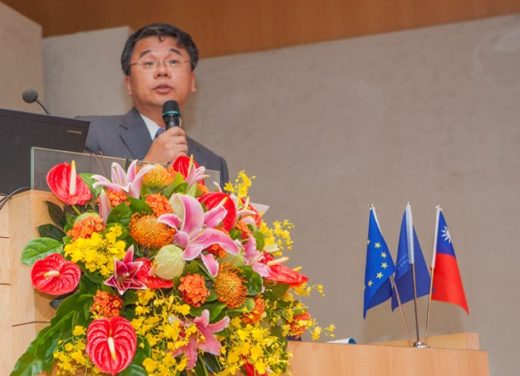
The first session feature three presentations.
Topic: Case study experience of low carbon tourism and intelligent transport in the Sun Moon lake area
Speaker: Chen Chi-hua, Division Director, Institute of Transportation
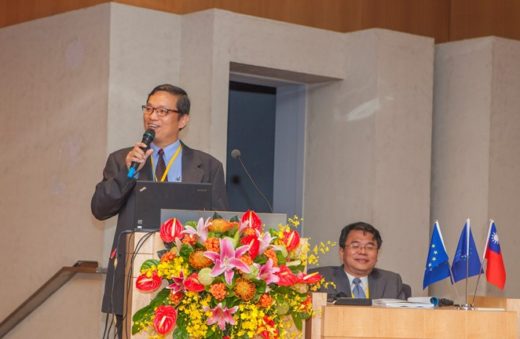
Chen described some innovative ways that are being employed to solve transportation problems that have resulted from the large increase in tourists travelling to Taiwan in recent years. He focused on some solutions implemented in the scenic Sun Moon Lake area. In recent years the Taiwan Tourism Bureau has been promoting domestic and international travel. Given an increase in tourism and the fact that up to 80% of visitors drive to Sun Moon Lake, there has been a significant increase in traffic congestion and pollution while existing public transport has been insufficient to meet demand. The government wants to promote the concept of "e-travel" passes in the future which would integrate a number of transportation, travel and tourism information services and encourage the use of public transport. In addition, it wants to develop cloud based information and applications to give tourists real time information on traffic conditions, travel, leisure and entertainment services. The short term aim is to reduce the number of private cars by 30%. The long-term objective is to try to encourage visitors to change their behavior and thereby introduce a new low carbon travel model to society. The Sun Moon lake area already has extensive bicycle and hiking trails. Development plans include adding electric buses and electric vehicle (EV) sharing services. Ultimately the goal is to make renting and using an electric car as easy as renting a Youbike in Taipei city. The idea of the e-travel pass is to have a single pass that is able to be used for any mode of transport including e-buses, EVs, boats and gondolas.
Topic: Case study of smart logistics information system in Taiwan
Speaker: Dr Chou Ja-ching, Senior Transportation Analyst, Institute of Transportation
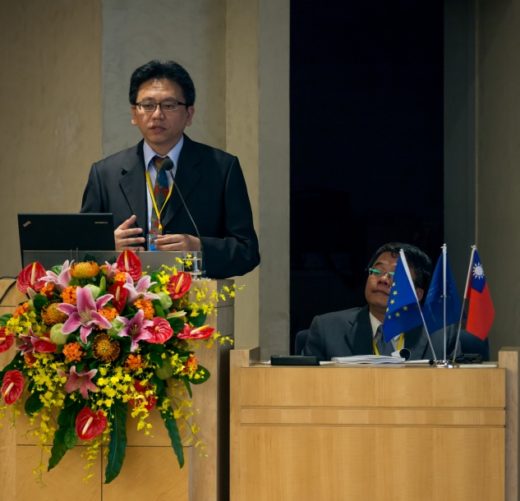
Chou gave an overview of plans for intelligent logistics in Taiwan's free trade zones. Customs are working on new logistics information systems designed to streamline customs' processes and clearance. He also gave some details of case studies of companies that have tested new systems and processes and achieved faster customs clearance. In a pilot e-freight project, unfinished goods manufactured in China and embedded with radio frequency identification (RFID) chips were sent to Taiwan for repacking and reshipping to the United States. All the data from every step in the process was entered into a single system and all stakeholders were able to access and monitor every step of the process in real time. The pilot case demonstrated that it is possible to reduce processing time by seven hours.
Topic: Navigation based mobility
Speaker: Giuseppe Izzo, General Manager, Taiwan & Vice President of Greater China & South Asia Region, STMicroelectronics
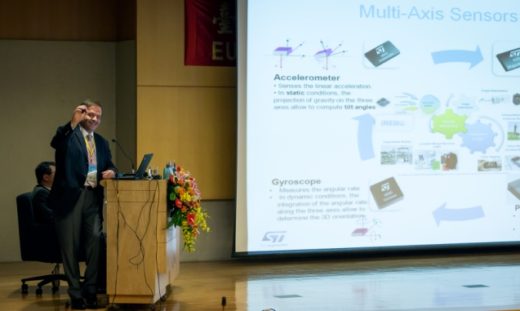
Izzo noted that semiconductors are crucial enablers of automotive safety and communication. 25% of ST's revenues are derived from products for automotive customers including various chips for video cameras, radar, power technologies, embedded flash memory for engines and smart sensors. All of these technologies are aimed at making cars more efficient and safer. One of the most prominent examples of the benefits of automotive telematics is automated emergency call (eCall) technology.
The European Commission forecasts that emergency call (eCall) systems will be installed in each new car by October 2015. The eCall is an automated emergency call for serious road accidents. When triggered, the eCall would communicate the location of the vehicle and information related to the accident to emergency service operators. Other countries such as Brazil, Russia and the United States have similar emergency call plans in place.
These type of systems will improve as satellite technology and coverage improves. The EU's Galileo satellite system should be ready by 2018. When the system is up and running, it will not only improve emergency services but will open the way for a whole range of safety, information and leisure services. But given the various satellite systems in operation today, chips and systems will need to work seamlessly with all of them. In addition, when a satellite signal is not available (such as in tunnels, urban canyons or in buildings) coverage has to be done by multi-axis sensors. In January 2014, ST introduced its Teseo III family, which is able track signals from GPS, Beidou, Glonass and Galileo simultaneously.
We are just beginning to realize the potential of vehicle to vehicle and internet of things interconnectivity. Future developments will help to improve traffic efficiency and unlock a whole new range of useful services.
Session 2 – Safe transportation
Moderator: Lin Shinn-der, Deputy Director General, Institute of Transportation
The moderator made the point that accidents, besides the trauma, loss of human life and injury, also results in a lot of transportation and related activity related to emergency services that generate a lot of carbon emissions. Therefore, improving and promoting safety with a view to try to prevent accidents is important not only for human welfare but to reduce carbon emissions.
Topic: Safety assistance systems
Speaker: Webber Lee Yu-chung, Manager, Automotive Research & Testing Center (ARTC)
Lee gave an overview of global auto electronics trends, particularly safety assistance systems globally and in Taiwan. The development of advanced driver systems has been and will continue to be rapid in future. Stand-alone systems will evolve to include systems that are increasingly interconnected. Technology will improve to allow vehicles to communicate with one another by exchanging basic safety data such as speed and position. Sensors, internet and satellite technology will need to be improved in order to compensate for signal blockage by blind spots in cities and delays due to poor internet or satellite connectivity. Taiwan's automotive electronics market has witnessed steady growth over the past ten years. It has more than doubled since 2006 and rose by 16.5% year on year in 2013 alone. Lee concluded his presentation with an overview of the ARTC.
Topic: Motorcycle ABS
Speaker: Wilko Block, Strategic Marketing Manager, Chassis Systems Control Division, Bosch Japan
Wilko Block gave an overview of the effectiveness of anti-lock braking systems (ABS) in improving safety and reducing the number and severity of accidents. While safety measures for cars have a long history of progress dating back to when three-point seat belts were introduced in 1959, little attention has been paid to motorcycles so far. This is clear when viewing the statistics on motor vehicle accidents and fatalities. According to official German statistics, while the number and severity of passenger car accidents has continued to decline steadily since 1990, the corresponding figures for motorcycle-related accidents have hardly moved. Based on the number of fatalities in the EU, riding a motorcycle is about 20 times more dangerous than driving a car. Given the higher proportion of motorcycles (as a proportion of the total number of vehicles) on the roads in Asia, the risk of accidents is even higher. Motorcyclists account for 20% of road traffic fatalities in Europe and Japan, 14% in the United States, 28% in China and 46% in Taiwan (although it should be noted that motorcycles account for almost three quarters of Taiwan's overall vehicles).
There are three main ways to try to reduce the incidence of motorcycle accidents:
Infrastructure: By implementing various measures such as traffic flow optimization adapting roads and using other ways to separate passenger vehicles from motorcycles.
Safety awareness, education and enforcement: Working to improve the safety education, awareness and behavior of drivers.
Vehicle safety: Implement both active and passive safety technology in vehicles, inspection and maintenance.
Bosch's analysis shows that braking behavior is an important factor in accidents. Riders are either too slow to react or do not react in the best way in various situations. This is particularly dangerous on wet roads. ABS works by reducing brake pressure. Without ABS, wheels will lock causing the motorcycle to skid, usually uncontrollably. ABS prevents wheel locking and also controls the degree of braking, thereby helping to keep the bike stable and also reducing the braking distance.
Many advances have been made in ABS technology over the years. Motorcycle ABS units used to be bulky and weigh four kilograms but the latest versions weigh as little as 700 grams and are much smaller. According to Bosch's analysis, 26% of accidents in Germany could be prevented by installing ABS and a further 31% of accidents would be less severe if ABS are installed. Figures are even higher in countries like India.
In March 2013, the EU passed legislation on motorcycle safety. By 2016, it will be mandatory to fit an anti-lock braking system (ABS) to all motorcycles that have an engine displacement greater than 125 cc. In addition, smaller motorized two-wheelers with displacement of 50 cc or more are required to have either ABS or a combined braking system. Similar legislation is being planned in the United States, Japan and Brazil.
Besides increasing safety, other benefits of installing ABS include lower insurance rates and a boost to the safety image of motorcycle brands whose models are equipped with ABS. For these reasons, ABS installation rates are expected to increase significantly in future.
Topic: Ford Sync emergency assistance and vehicle connectivity
Speaker: Ryan McGee, Senior Manager, Asia Pacific Product Operations and Launch, EESE - Connected Services, Ford Motor Company
Ryan McGee introduced the concept of smart connectivity in vehicles. There are currently around a billion vehicles in the world and this number could double or rise even higher by 2050. To reduce the impact on roads and reduce traffic problems will require a much smarter approach and use of technology. In the near term, communications will be used to improve safety. In the medium term, there will be more vehicle to vehicle connectivity linked to the cloud. The long term goal is a network connecting all forms of transportation.
Ford is working on three main aspects of connectivity: Built in, Brought in and Beamed in. Built in refers to built-in connectivity solutions in cars. Brought in refers to connecting the car to the driver's smart phone. Beamed in refers to utilizing data from the cloud.
Ford's Sync system is an emergency alert system that has been installed in 10 million cars with a target of 14 million by 2015. The beauty of the system is that it is simple and works on existing technology unlike several others which require special equipment or software. The system is automatically triggered in a severe emergency, such as when a car's air bag is released. When this happens, the system initiates a call to emergency services. It starts a countdown. At the same time, it determines the car's location using GPS. If the driver does not interrupt the process, the system sends a prerecorded message to the emergency operator, which adds the GPS coordinates of the car. Since the system is only triggered in a real emergency, there are no false alarms. The system has already saved lives. In one example provided by McGee a man crashed into a river in a remote area and was incapacitated. Given the remoteness of the area and the fact that he was in a black car, it is unlikely he would have been discovered in time by a fellow motorist. He therefore attributed his rescue and survival to the Sync system.
Keynote speech
The afternoon section of the conference began with a keynote speech by MoTC Administrative Deputy Minister Wu Men-feng.
Topic: Green transport in Taiwan
Speaker: Wu Men-feng, Administrative Deputy Minister, MoTC
The Taiwan government has set an overall national target of reducing CO2 emissions to the 2005 level by 2020 and the 2000 level by 2025. To reach these targets requires inter-ministry cooperation and the Executive Yuan has set targets for various ministries and agencies. CO2 emission allowances have been set for each major sector, broken down as follows: energy, industry, residence, service, transport and agriculture.
The transport sector is required to cut emissions to 34.5 million tonnes by 2020 and to 29.7 million tonnes by 2025. In order to reach this goal, the MoTC has a number of initiatives, which include promoting green transportation and organizing green transport network landmark projects. The major goals include increasing the use of public transport to 30%, raising fuel economy (efficiency) standards by 25%, replacing all city buses and 40% of tour buses to alternative fuels, electric or hybrids, replacing 5% of scooters to electric scooters and 10% of passenger cars to alternative fuels.
Since the majority of energy in the transportation sector is used by passenger cars, motorcycles and trucks, the most effective way to reduce emissions is to increase the use of public transport for commuters and rail transportation for goods. Energy density from rail transport is the lowest, followed by high speed rail, MRTs and buses. Cutting down on personal transport can help meet reduction goals.
In order to make public transport more convenient the government is constantly working to enhance the scope and quality of public transport networks through upgrading and extending roads and MRT lines. Efforts are already paying off. For example, the number of bus passengers has increased about 20% since 2004. The efficiency and usage of rail transport and high speed rail has increased. (For example, usage of the high speed rail has risen three-fold since 2004). By combining these networks with MRT and bus networks, the aim is to achieve (as far as possible) door to door public transport. Finally, the Youbike system for "last mile travel" has been an outstanding success. The average daily turnover of each Youbike has reached 10 times. Following the success in Taipei and Kaohsiung, similar systems are being rolled out in New Taipei, Taichung and Pingtung.
To further discourage the use of cars in cities, the MoTC is considering extending charging for roadside parking, offering progressive parking rates for the central business district (higher fees) and lower fees for less congested areas. Another idea being considered is a fuel tax while the MoTC is experimenting with variations in highway toll fees for off-peak times.
The Ministry of Economic Affairs has several pilot projects for intelligent electric vehicles in various cities and Taiwan's offshore islands. Subsidies are being offered for e-scooters. There are already a number of electric buses in operation and the programme will be extended.
Wu concluded by saying that Taiwan wants to be aligned with international trends, treaties and protocols. In this regard, relevant departments will continue to participate in regional and international bodies as members or observers. He expressed the wish to learn from international experience regarding carbon trading and welcomed ideas and suggestions from participants on how Taiwan can make further progress.
Session 3 – Sustainable green mobility
Moderator: Raoul Kubitschek, Director, LCI, ECCT
Topic: EU-Taiwan e-mobility solutions
Speaker: HK Wang, Vice President, Mobility Division, Siemens Limited Taiwan
The major developments that will have an impact on our lives for the next few decades are demographic change, urbanization, climate change and globalization. The world's population continues to rise and move to cities. Over 50% of the world's population lives in cities. Cities account for more than half of the world's economic activity but also consume 75% of the energy and produce 80% of CO2 emissions. It therefore makes sense to target all aspects of how cities are planned and operate to improve overall sustainability. About 64% of all travel is inside cities. One of the top priorities therefore has to be improving the way people and goods are transported by integrating transport and logistics solutions.
Siemens invests a billion dollars every year to develop green solutions. Governments also need smarter and more targeted incentives to get people to change their behavior. For example, one city in Germany saw more than 50% of drivers switching from private cars to public trams for use in the cities when they were offered free parking spaces outside the city. Wang concluded by highlighting some of his company's mobility solutions for the cities of London, Vienna, Beijing, Shanghai and Munich. These include fully automated passenger transport units at airports, hybrid electric trucks which use electricity in the city by connecting to the same overhead cable lines used by trams and then switching to regular combustion outside the city. The company is also providing EV charging stations in Shanghai.
Topic: E-mobility project case study in Singapore
Speaker: Nigel Chen, Project Manager, Bosch
Chen gave a first-hand account of his company's experience in running a pilot project for electric vehicles in Singapore since 2010 when the Singapore government decided to set up test-bed project to measure the impact of EVs on the grid. The system became operational in 2011. It included an RFID-based card authentication system, more than 100 charging spots (three of which were fast chargers), 71 vehicles from 50 organisations. After four years of operation, users have reported that it has been a positive experience.
Chen offered a number of insights gleaned from the experience. One important lesson is to decide on the standard size and voltage of charging plugs and stations. All cars and charging stations should use the same plugs and converters take up a lot of space. It is better therefore to decide in advance whether to use 100 or 240 volts.
It is also very important to make it convenient and simple to locate a charging station. Bosch's software division designed a mobile app that not only provides the location of the nearest charging station but also indicates whether or not is available (important considering that slow charges take eight hours). Drivers also want to know how much it costs to charge and how the payment system works.
Given the fact that Singapore is small, drivers only tend to travel about 55 kilometres (km) or less day. With an average range of 110km range, this means that most cars can be driven for two days before needing to recharge the batteries. The pilot project showed that drivers only recharged their cars about 10 times a month on average and this was usually overnight (only 10% of them used fast charges more than four times a month). This translates into energy consumption of about 162 kilowatt hours per car per month. Singapore's experience showed that it is not necessary for one charging station per car in that city.
Chen stressed the importance of taking into account the full range of services needed for a successful EV system including charging station support, driver support, software solutions and back-end services. Implementation needs local knowledge as well as international experience to be successful. Besides infrastructure planning, software and authentication and payment methods have to be carefully planned. The risk of unauthorized usage of charging has to be dealt with. Plenty of time should be set aside to ensure proper consultation with all stakeholders (such as landowners on where to install charging stations) in order to reach consensus on space management and payment.
Chen said that Taiwan's EasyCard or a similar system could be used for e-mobility. He also expressed the view that Taiwan is an ideal location for electric vehicles. If fast chargers are strategically set up in just three locations in Taiwan, it is possible to drive electric cars (with existing battery ranges) all around Taiwan. The issue of whether or not EVs are really clean, of course depends on the source of power from the utility. However, as the experience from Singapore showed, if most EVs are recharged overnight, the most off-peak of off-peak periods, it would make use of unused capacity that would otherwise be wasted as power stations have to be kept running all the time. Moreover, during peak periods, when EVs are parked, they could themselves be connected to feed power into the grid and thereby serve as mini power stations.
Topic: Light weight solutions and eco-efficiency
Speaker: Cheng Tsung-chieh, New Market Development, Performance Materials, BASF
Cheng introduced lightweight plastics for the automotive industry, an effective part of the solution to save fuel and reduce emissions. Cars use most of their energy (85%) during operation. Reducing the weight of vehicles is therefore an effective way to reduce fuel consumption. The EU has set a corporate average emissions target of 95 grams of co2 per kilometer for cars by 2020. Companies that fail to meet target will be fined.
Composite materials used to be just niche products but they are now moving to the mainstream. Light weight construction using new composites, such as those developed by BASF, could reduce the average weight of a vehicle by 30-50%. The biggest potential is in chassis, where weight could be reduced by 100-150 kilograms with the right combination of materials but many other components, that have traditionally been made of steel, can be replaced by alternative, light-weight but equally strong materials, including seat pans, bumpers, battery cases and wheel rims.
BASF has done extensive analysis to determine the impact and relevance of light-weight materials, which includes the comparative carbon emissions generated during the production of light-weight materials compared to steel. While the cost and impact depends on the car's design, a weight saving of 100 kgs results in an average saving of 0.3 litres of fuel per 100 km or eight grams of CO2 per kilogram. Light-weight materials are therefore an important component in the drive towards green transport.
